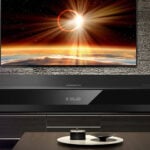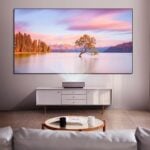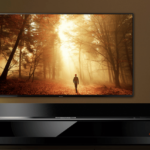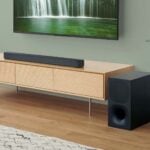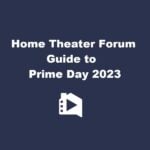David_P
Stunt Coordinator
- Joined
- Dec 12, 2003
- Messages
- 149
The Obelisk of Doom: how's that for a title?  So christened by my middle daughter....
So christened by my middle daughter....
History: I had always want to build a DIY sub, but never seemed to have the cash or time to actually do it. At long last I managed to collect some of the parts. I originally had an Adire Tumult 15D2, but the driver had mechanical/spec issues (1st production run version) and couldn't be replaced at the time, so I swapped it for 4 Tempest classic drivers. The amp used is an Adire ADA-1200 plate amp with on-board LT circuit.
Design: The four tempest drivers are wired with the voice coils in series, and all drivers then paralleled. This gives a 4 ohm load. The system is 95.1 db efficient 1w/1m, and is in theory capable of 126 dB spl above rolloff at full power, without accounting for any room gain or walls.
The box is sized at 380 liters net, and is very heavily stuffed with 15 pounds of polyfill.
Unibox predicts:
QTC=.612
FB=35.92
F3=40.93
Driver were wired up and broken in with 20hz sine waves at about 1" peak-peak excursion for probably 30 hours or so over the course of a week. They were simply sitting braced on a couple of 2x4's so the pole vents were clear.
Sub was assembled and tested without LT or equalization to measure Qtc, Fb, F3.
Using a large power resistor and medium signal testing, Fb was found to be 36hz and Qtc measured 0.6, impressively close. I remeasured it three times on two different days because I though I had to be doing something wrong to be so close. The method used is detailed at this site and I used the downloadable spreadsheet at the site to help:
http://sound.westhost.com/tsp.htm
The LT circuit is used agressively and pushes Qtc down to .577 and Fb down to 14 hz, with a predicted F3 of 18hz (not accounting for any room gain). I used the following LT excel spreadsheet;
http://sound.westhost.com/linkxfrm.zip
It allows for the input of actual measured system parameters, which should give more accurate and predictable results, as you're building the LT based on measured results rather than predicted responses.
Sub is physically sized such that, in theory, 1200 watts is incapable of driving drivers into overexcursion. This "theory" has be tested a couple of times... for example, there is a short section in War of the Worlds (DTS track) just before the first tripod comes out of the ground. As the ground cracks and Tom Cruise steps with one foot on the curb and the other on the street, there is some kind of low pulse which causes the drivers to madly gyrate. The ADA-1200 has clipped at this point (couple of loud "pops"), but the drivers haven't bottomed. Keep in mind at this volume level, even lower levels of bass like the tripods simply walking around mean that pocket doors in the basement are literally shaking and bouncing on their tracks (in a bathroom 20 feet away).
Design goals were essentially:
1) low extension
2) sealed box with low Qtc for sound quality
3) efficiency, which could be traded for extension
4) power-limited, not excursion limited
5) "reasonably" small footprint
6) mostly intended for HT use, with some music (eclectic)
7) had to look reasonably nice, given my nube wood working skillz.
Construction:
Inner box dimensions (inside of inner box) are 70" tall, 18" wide, and 20" deep. The entire box is 2 layers of .75" MDF, with the front baffle being 3 layers. The entire box excepting bottom is covered with .25" red oak plywood following ideas I first saw on William Eckle's web site. The base (plinith) is 3 layers of .75" MDF laminated together and covered with the same red oak plywood.
I bought 6 sheets of mdf, and used about 4.5 of them in the box. Box, base, drivers, polyfill, and amp total out to somewhere between 530-580 lbs, depending on how much the MDF really weighs.
Edges of the box were rabbeted out with .5" groove and .5" oak quarter round glued in. Box was sanded and stained with Lee Valley wiping dark walnut stain, and then covered with several coats of urthane gel finish (also from Lee Valley).


The two images above show the basic structure of the box with bracing and amp sub box (which is completely sealed off from the main box).
The basic inner box consisted of very careful cuts for top, bottom, front, back, and braces... and then everything else (sides of inner box, and all successive layers) was cut oversize and cut off with a router and flush-cutting bit. Inner box was brad-nailed together to hold things in place for clamping. All successive layers were simply glued and clamped wth a huge homemade "press", as the next picture shows.

This image shows the "press" I made to glue the successive layers of mdf and oak plywood on the inner box once complete. I basically cut a sheet of MDF in half and used it as top and bottom jaws in a huge vise, with pieces of 2x8 and clamps providing the force. Example: place oak (cut oversize) face down on mdf "press", spread glue with adhesive spreader, place box on oak, spread glue on box, place oak on box (face up), place top mdf "jaw" on oak, place 2x8's on top of jaw, clamp the living daylights out of it.

This image shows the face of the box with the driver holes routered out. The holes were cut first on the inner layer with a jasper jig. As successive layers of mdf/oak were added, with each new layer driver holes were were cut by drilling a pilot hole and used the flush cutting bit to make them align perfectly. The final driver inset was done with a rabbet bit with a bearing on it, after the driver cutout had been completely cut through all layers. You can see the three layers of mdf and thin layer of plywood in the picture.

At this point, the box is upside down and holes are being drilled to attach the plinith. You can see the .5" groove on all corners, ready for quarter round. Quarter round was glued and clamped in place using band clamps (multiple). I mitered the corners of the quarter round, but I'm not sure I would bother if I did it again. Corners (which protruded) were rounded off with a 1/2" round over bit.
Prior to staining, the driver insets were hand-painted (carefully!) with a flat black paint (two coats) to ensure that no "light wood/mdf" would show up.

This is the final product... the colours are actually slightly off at least on my monitor. Both the box and walls are quite a bit darker in real life... flash perhaps. The grain of the oak stands out quite a bit more in real life as well, and contrasts really nicely. The picture makes the whole thing look somewhat washed out. Sub occupies right front corner of a 12' x 20' room, on the 12' wall.
EQ: The ADA-1200 amp comes with two bands of parametric EQ. I borrowed a digital RS SPL meter, used a laptop to generate tones, and got totally frustrated. For the life of me I could not tame my room with two bands of EQ. So I got a BFD 1124P through my brother on eBay and had another good go at it. The results are much better now. Image below shows before (blue) and after (pink). I ended up using 7 filters. I could probably redo it with perhaps one or two less, but I couldn't do it with two. In addition, I found that the Q settings of the parametric EQ on the plate amp were too broad and created too much interaction with frequencies I didn't want to touch. The very narrow Q (allowing bands of 1/60th of an octave) settings that are available on the BFD are much more effective, IMHO.

How it works: Pretty well, I think The sub is tremendously efficient, and seems to me to be easily capable of overpowering the room. It's fun to sweep the room and see what "bits" resonate at what frequency. For example, at 18-19hz, the aluminum slider in the window on the opposing wall to the sub rattles and bounces in its track, despite being clamped in place with an anti-tamper/break-in device.
The sub is tremendously efficient, and seems to me to be easily capable of overpowering the room. It's fun to sweep the room and see what "bits" resonate at what frequency. For example, at 18-19hz, the aluminum slider in the window on the opposing wall to the sub rattles and bounces in its track, despite being clamped in place with an anti-tamper/break-in device.
The low Qtc of the sub makes with bass seem almost light at times, yet the power can be rather frightening. Example: one of the explosions in 'Munich' (the one in which the Israeli team leader was in the hotel room next door when the bomb explodes) literally made me bounce off the couch... it was a purely instinctual "flight/fight" reaction. I knew what was happening, but the power was way too unexpected. My wife complained that the back deck (10' x 20', and starting about 12' behind the sub) was vibrating and quivering when my son was watching the attack in the movie "Pearl Harbor". She also complains that it bothers her stomach, whcih I dutifully take as a compliment
The sub sounds pretty good for music, IMHO. The biggest struggle is getting the integration right for both music and HT. The quick/light bass sound of a low Qtc sealed sub makes me want to pump the bass level up when listening to music, but then many DVD movies are simply over-powering with their bass levels.
Things I "knew", but had to experience for myself:
1) cutting or routering MDF makes dust, tons of dust. If at all possible, due all cutting and routering outside. On a non-windy day, or your neigbours will hate you.
2) a router and a flush-cutting bit more than compensate for a mediocre table saw Seriously... using this method of box building will make you look like a wood working genius. Even if you don't have a table saw, get HD or your mdf vendor to make the long accurate cuts (in my case I would have needed 3 8' pieces at 18"), get a good straight edge and skill saw/blade, cut the the accurate 'strips' into pieces you need (you'll need enough for inner box top, botton, front, back, and all braces) and then just cut everything else (from inner box sides and out) oversize and trim it off. It will destroy your flush-cutting bit (cutting this much MDF), but everything fits perfectly.
Seriously... using this method of box building will make you look like a wood working genius. Even if you don't have a table saw, get HD or your mdf vendor to make the long accurate cuts (in my case I would have needed 3 8' pieces at 18"), get a good straight edge and skill saw/blade, cut the the accurate 'strips' into pieces you need (you'll need enough for inner box top, botton, front, back, and all braces) and then just cut everything else (from inner box sides and out) oversize and trim it off. It will destroy your flush-cutting bit (cutting this much MDF), but everything fits perfectly.
3) T-Nuts and MDF are questionable. I had troubles with mine, mostly due to a couple of the driver mounting holes not being exactly perpendicular. If I was to do this again, I would get some kind of jig to drill vertical holes, and use a plywood ring around the back of each driver hole, or build the whole inner box out of plywood, or glue small plywood blocks where the t-nuts go. The T-nuts tear out pretty easily when set in MDF :frowning:
4) You need a good dolly to move 550+ lbs. With BIG wheels. My wheels weren't BIG and I crushed a couple of wheels and ended up with a temporarily stranded sub :frowning: And you need to build a MDF "road" (using the multi-purpose MDF jaw clamps as the road pieces) if you want to move 550+ lbs on a dolly with BIG wheels on carpet Otherwise you push a 'wave" in the carpet.
Otherwise you push a 'wave" in the carpet.
5) Two bands of EQ is most likely not enough. Maybe you'll be luckier than me... but don't bet on it. Previously skeptical of the value of a BFD, I am no longer. Toughest part of the whole exercise is getting the input level set so that you don't clip the BFD. Having a variable output on an AV receiver and a well-thought-out input gain setting range on the ADA-1200 makes the setting up doable... it's just fiddily getting there.
6) soldering is harder than you think... use a great iron and a small tip, plan the order in which you add components... it matters. As in the short components get soldered before the tall components
7) you can never have enough clamps. Ever.
8) the cut-out size of the ADA-1200 is not the same as the actual amp size. The amp is meant to fit in a hole, not a box behind a hole. I ended up having to trim off (carefully!!!) the bottom of the huge bolt holding the massive toroidal transformer in place in order to get the amp to fit, as my amp box was sized the same as the cut out, roughly. If you want to build a amp box like this, make it bigger than the cut-out by an inch (or so) in every direction.
The design essentially throws away some of its huge efficency to gain some fairly impressive low end extension. At 7 Hz the sub is about 75db as referenced to the graph above. It's sort of spooky, you hear NOTHING (except perhaps something rattling somewhere), yet you can walk around the room and feel weird pressure in some spots. Bizarre. The ADA-1200 amp has loads of power and is very well built. The on-board LT is very cool, but the parametric EQ will not be adequate for all users, I suspect.
Thanks:
1) Bob Reimer from CSS (Creative Sound - Abbotsford BC)... I bought the original tumult and ADA-1200 from him and he was tremendously helpful and has shown me real integrity in how he runs his business. I'm impressed.
2) Bill Eckles... his web site gave me a pile of ideas on how to actually do the construction, and he was good enough to answer a number of emailed questions.
3) Frontwave from Surrey... ran into this fellow through Bob Reimer, and he helped with intial tumult testing (which lead to its return), and much help with actually testing my finished sub.
4) my wife whose gracious good humor carried the day and who only occasionally rolls her eyes when she looks at this thing
David
History: I had always want to build a DIY sub, but never seemed to have the cash or time to actually do it. At long last I managed to collect some of the parts. I originally had an Adire Tumult 15D2, but the driver had mechanical/spec issues (1st production run version) and couldn't be replaced at the time, so I swapped it for 4 Tempest classic drivers. The amp used is an Adire ADA-1200 plate amp with on-board LT circuit.
Design: The four tempest drivers are wired with the voice coils in series, and all drivers then paralleled. This gives a 4 ohm load. The system is 95.1 db efficient 1w/1m, and is in theory capable of 126 dB spl above rolloff at full power, without accounting for any room gain or walls.
The box is sized at 380 liters net, and is very heavily stuffed with 15 pounds of polyfill.
Unibox predicts:
QTC=.612
FB=35.92
F3=40.93
Driver were wired up and broken in with 20hz sine waves at about 1" peak-peak excursion for probably 30 hours or so over the course of a week. They were simply sitting braced on a couple of 2x4's so the pole vents were clear.
Sub was assembled and tested without LT or equalization to measure Qtc, Fb, F3.
Using a large power resistor and medium signal testing, Fb was found to be 36hz and Qtc measured 0.6, impressively close. I remeasured it three times on two different days because I though I had to be doing something wrong to be so close. The method used is detailed at this site and I used the downloadable spreadsheet at the site to help:
http://sound.westhost.com/tsp.htm
The LT circuit is used agressively and pushes Qtc down to .577 and Fb down to 14 hz, with a predicted F3 of 18hz (not accounting for any room gain). I used the following LT excel spreadsheet;
http://sound.westhost.com/linkxfrm.zip
It allows for the input of actual measured system parameters, which should give more accurate and predictable results, as you're building the LT based on measured results rather than predicted responses.
Sub is physically sized such that, in theory, 1200 watts is incapable of driving drivers into overexcursion. This "theory" has be tested a couple of times... for example, there is a short section in War of the Worlds (DTS track) just before the first tripod comes out of the ground. As the ground cracks and Tom Cruise steps with one foot on the curb and the other on the street, there is some kind of low pulse which causes the drivers to madly gyrate. The ADA-1200 has clipped at this point (couple of loud "pops"), but the drivers haven't bottomed. Keep in mind at this volume level, even lower levels of bass like the tripods simply walking around mean that pocket doors in the basement are literally shaking and bouncing on their tracks (in a bathroom 20 feet away).
Design goals were essentially:
1) low extension
2) sealed box with low Qtc for sound quality
3) efficiency, which could be traded for extension
4) power-limited, not excursion limited
5) "reasonably" small footprint
6) mostly intended for HT use, with some music (eclectic)
7) had to look reasonably nice, given my nube wood working skillz.
Construction:
Inner box dimensions (inside of inner box) are 70" tall, 18" wide, and 20" deep. The entire box is 2 layers of .75" MDF, with the front baffle being 3 layers. The entire box excepting bottom is covered with .25" red oak plywood following ideas I first saw on William Eckle's web site. The base (plinith) is 3 layers of .75" MDF laminated together and covered with the same red oak plywood.
I bought 6 sheets of mdf, and used about 4.5 of them in the box. Box, base, drivers, polyfill, and amp total out to somewhere between 530-580 lbs, depending on how much the MDF really weighs.
Edges of the box were rabbeted out with .5" groove and .5" oak quarter round glued in. Box was sanded and stained with Lee Valley wiping dark walnut stain, and then covered with several coats of urthane gel finish (also from Lee Valley).


The two images above show the basic structure of the box with bracing and amp sub box (which is completely sealed off from the main box).
The basic inner box consisted of very careful cuts for top, bottom, front, back, and braces... and then everything else (sides of inner box, and all successive layers) was cut oversize and cut off with a router and flush-cutting bit. Inner box was brad-nailed together to hold things in place for clamping. All successive layers were simply glued and clamped wth a huge homemade "press", as the next picture shows.

This image shows the "press" I made to glue the successive layers of mdf and oak plywood on the inner box once complete. I basically cut a sheet of MDF in half and used it as top and bottom jaws in a huge vise, with pieces of 2x8 and clamps providing the force. Example: place oak (cut oversize) face down on mdf "press", spread glue with adhesive spreader, place box on oak, spread glue on box, place oak on box (face up), place top mdf "jaw" on oak, place 2x8's on top of jaw, clamp the living daylights out of it.

This image shows the face of the box with the driver holes routered out. The holes were cut first on the inner layer with a jasper jig. As successive layers of mdf/oak were added, with each new layer driver holes were were cut by drilling a pilot hole and used the flush cutting bit to make them align perfectly. The final driver inset was done with a rabbet bit with a bearing on it, after the driver cutout had been completely cut through all layers. You can see the three layers of mdf and thin layer of plywood in the picture.

At this point, the box is upside down and holes are being drilled to attach the plinith. You can see the .5" groove on all corners, ready for quarter round. Quarter round was glued and clamped in place using band clamps (multiple). I mitered the corners of the quarter round, but I'm not sure I would bother if I did it again. Corners (which protruded) were rounded off with a 1/2" round over bit.
Prior to staining, the driver insets were hand-painted (carefully!) with a flat black paint (two coats) to ensure that no "light wood/mdf" would show up.

This is the final product... the colours are actually slightly off at least on my monitor. Both the box and walls are quite a bit darker in real life... flash perhaps. The grain of the oak stands out quite a bit more in real life as well, and contrasts really nicely. The picture makes the whole thing look somewhat washed out. Sub occupies right front corner of a 12' x 20' room, on the 12' wall.
EQ: The ADA-1200 amp comes with two bands of parametric EQ. I borrowed a digital RS SPL meter, used a laptop to generate tones, and got totally frustrated. For the life of me I could not tame my room with two bands of EQ. So I got a BFD 1124P through my brother on eBay and had another good go at it. The results are much better now. Image below shows before (blue) and after (pink). I ended up using 7 filters. I could probably redo it with perhaps one or two less, but I couldn't do it with two. In addition, I found that the Q settings of the parametric EQ on the plate amp were too broad and created too much interaction with frequencies I didn't want to touch. The very narrow Q (allowing bands of 1/60th of an octave) settings that are available on the BFD are much more effective, IMHO.

How it works: Pretty well, I think
The low Qtc of the sub makes with bass seem almost light at times, yet the power can be rather frightening. Example: one of the explosions in 'Munich' (the one in which the Israeli team leader was in the hotel room next door when the bomb explodes) literally made me bounce off the couch... it was a purely instinctual "flight/fight" reaction. I knew what was happening, but the power was way too unexpected. My wife complained that the back deck (10' x 20', and starting about 12' behind the sub) was vibrating and quivering when my son was watching the attack in the movie "Pearl Harbor". She also complains that it bothers her stomach, whcih I dutifully take as a compliment
The sub sounds pretty good for music, IMHO. The biggest struggle is getting the integration right for both music and HT. The quick/light bass sound of a low Qtc sealed sub makes me want to pump the bass level up when listening to music, but then many DVD movies are simply over-powering with their bass levels.
Things I "knew", but had to experience for myself:
1) cutting or routering MDF makes dust, tons of dust. If at all possible, due all cutting and routering outside. On a non-windy day, or your neigbours will hate you.
2) a router and a flush-cutting bit more than compensate for a mediocre table saw
3) T-Nuts and MDF are questionable. I had troubles with mine, mostly due to a couple of the driver mounting holes not being exactly perpendicular. If I was to do this again, I would get some kind of jig to drill vertical holes, and use a plywood ring around the back of each driver hole, or build the whole inner box out of plywood, or glue small plywood blocks where the t-nuts go. The T-nuts tear out pretty easily when set in MDF :frowning:
4) You need a good dolly to move 550+ lbs. With BIG wheels. My wheels weren't BIG and I crushed a couple of wheels and ended up with a temporarily stranded sub :frowning: And you need to build a MDF "road" (using the multi-purpose MDF jaw clamps as the road pieces) if you want to move 550+ lbs on a dolly with BIG wheels on carpet
5) Two bands of EQ is most likely not enough. Maybe you'll be luckier than me... but don't bet on it. Previously skeptical of the value of a BFD, I am no longer. Toughest part of the whole exercise is getting the input level set so that you don't clip the BFD. Having a variable output on an AV receiver and a well-thought-out input gain setting range on the ADA-1200 makes the setting up doable... it's just fiddily getting there.
6) soldering is harder than you think... use a great iron and a small tip, plan the order in which you add components... it matters. As in the short components get soldered before the tall components
7) you can never have enough clamps. Ever.
8) the cut-out size of the ADA-1200 is not the same as the actual amp size. The amp is meant to fit in a hole, not a box behind a hole. I ended up having to trim off (carefully!!!) the bottom of the huge bolt holding the massive toroidal transformer in place in order to get the amp to fit, as my amp box was sized the same as the cut out, roughly. If you want to build a amp box like this, make it bigger than the cut-out by an inch (or so) in every direction.
The design essentially throws away some of its huge efficency to gain some fairly impressive low end extension. At 7 Hz the sub is about 75db as referenced to the graph above. It's sort of spooky, you hear NOTHING (except perhaps something rattling somewhere), yet you can walk around the room and feel weird pressure in some spots. Bizarre. The ADA-1200 amp has loads of power and is very well built. The on-board LT is very cool, but the parametric EQ will not be adequate for all users, I suspect.
Thanks:
1) Bob Reimer from CSS (Creative Sound - Abbotsford BC)... I bought the original tumult and ADA-1200 from him and he was tremendously helpful and has shown me real integrity in how he runs his business. I'm impressed.
2) Bill Eckles... his web site gave me a pile of ideas on how to actually do the construction, and he was good enough to answer a number of emailed questions.
3) Frontwave from Surrey... ran into this fellow through Bob Reimer, and he helped with intial tumult testing (which lead to its return), and much help with actually testing my finished sub.
4) my wife whose gracious good humor carried the day and who only occasionally rolls her eyes when she looks at this thing
David



